Overlap in your swing

From a one-legged, weight back, very solid balanced position, his rock solid rear leg, is trying to turn the knee down and in, against the torso and arm action which is shifting/turning rearward, he opens his hips to clear them.
His rear hip is loaded by/against the rearward moving/turning (sometimes leaning) torso....not against the closing of the front leg or hip. The rear leg is trying to 'go'....by turning forward.....but it is resisted by the torso....as he clears his hips. The lead leg movement increases the stretch in the groin area. Tom has called it 'spreading the legs'. So the lead leg is stretching it as it moves forward and opens.....as the torso is holding it back.
From the resulting position....a highly loaded rear hip socket......he continues to resist with his arm action until 'go'.
Most consider the coil into the rear hip as the load. IMO, the coil is just the trigger for the running start. The coil turns to uncoil immediately. If it was a load you'd be bleeding your load immediately. The proper load is the rear hip trying to go forward....but can't....because of the rearward resistance of the upper body. And at 'go' the hip/leg thrusts to break through the resistance/load.
A rear hip turned rearward or a front hip turned into the rear hip, or the lead leg turned rearward into the hip, are not quality loads because the resulting action is a push of the rear hip forward. A push forward to break through the resistance.....resistance which is in front of the load. That does little good, other than momentum, when the thing that needs to be accelerated is behind you (the ball in this case). Your pushing the boogeyman. You're working your ass off to push the lead hip...or the lead leg. Which does little for the goal of accelerating the ball....which is behind you. The ball does not feel anything but momentum from the rear hip defeating the front hip or leg. There is no direct connection from the rear hip to the ball. All you have is arm action and lower body momentum......no drive train.
A good load has the rear hip trying to go forward against resistance behind it. This is a critical aspect of the overlap. The ball will feel the full benefit of the rear hip defeating the torso and arm action....which is behind the rear hip. The torso and arm will get defeated....the arm will get whipped....and yanked forward.
Originally posted by Teacherman
View Post

From a one-legged, weight back, very solid balanced position, his rock solid rear leg, is trying to turn the knee down and in, against the torso and arm action which is shifting/turning rearward, he opens his hips to clear them.
His rear hip is loaded by/against the rearward moving/turning (sometimes leaning) torso....not against the closing of the front leg or hip. The rear leg is trying to 'go'....by turning forward.....but it is resisted by the torso....as he clears his hips. The lead leg movement increases the stretch in the groin area. Tom has called it 'spreading the legs'. So the lead leg is stretching it as it moves forward and opens.....as the torso is holding it back.
From the resulting position....a highly loaded rear hip socket......he continues to resist with his arm action until 'go'.
Most consider the coil into the rear hip as the load. IMO, the coil is just the trigger for the running start. The coil turns to uncoil immediately. If it was a load you'd be bleeding your load immediately. The proper load is the rear hip trying to go forward....but can't....because of the rearward resistance of the upper body. And at 'go' the hip/leg thrusts to break through the resistance/load.
A rear hip turned rearward or a front hip turned into the rear hip, or the lead leg turned rearward into the hip, are not quality loads because the resulting action is a push of the rear hip forward. A push forward to break through the resistance.....resistance which is in front of the load. That does little good, other than momentum, when the thing that needs to be accelerated is behind you (the ball in this case). Your pushing the boogeyman. You're working your ass off to push the lead hip...or the lead leg. Which does little for the goal of accelerating the ball....which is behind you. The ball does not feel anything but momentum from the rear hip defeating the front hip or leg. There is no direct connection from the rear hip to the ball. All you have is arm action and lower body momentum......no drive train.
A good load has the rear hip trying to go forward against resistance behind it. This is a critical aspect of the overlap. The ball will feel the full benefit of the rear hip defeating the torso and arm action....which is behind the rear hip. The torso and arm will get defeated....the arm will get whipped....and yanked forward.



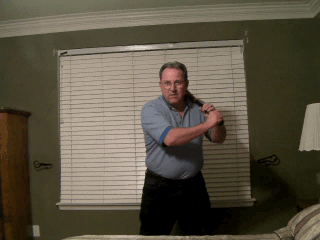


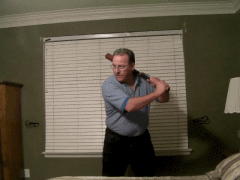




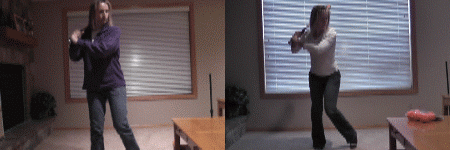
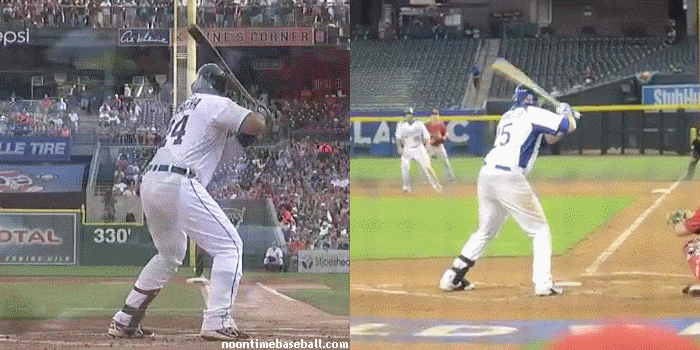
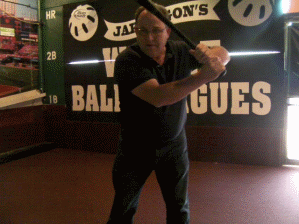

Comment